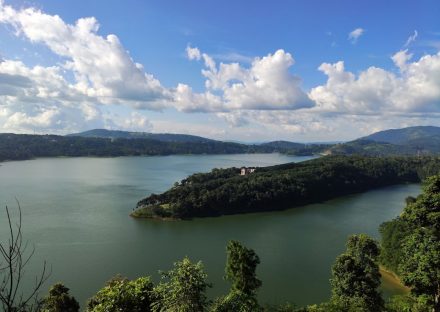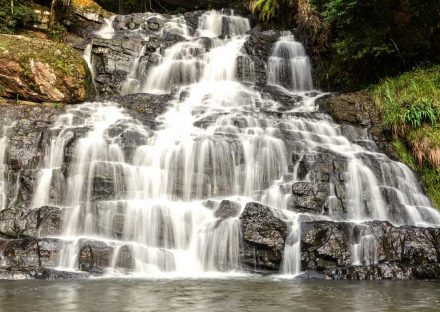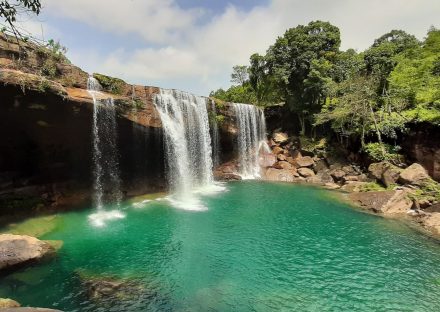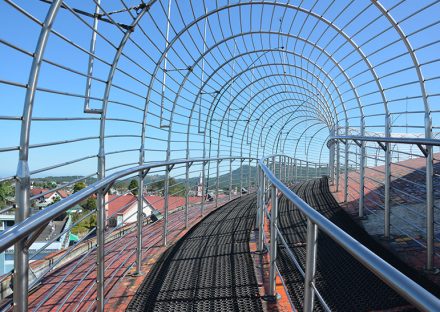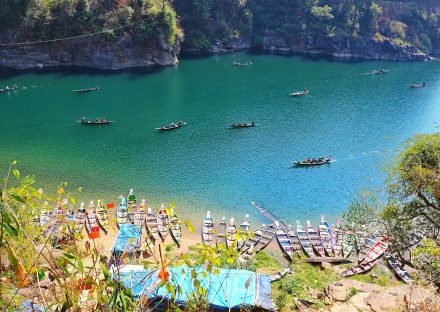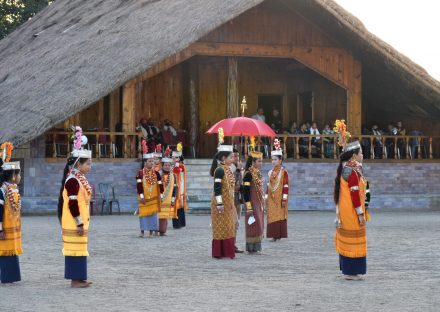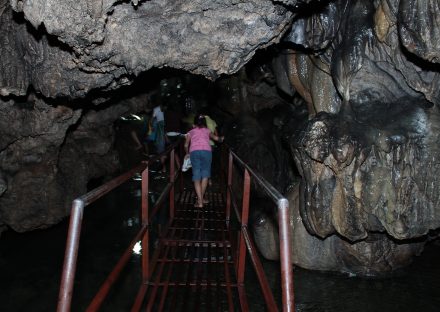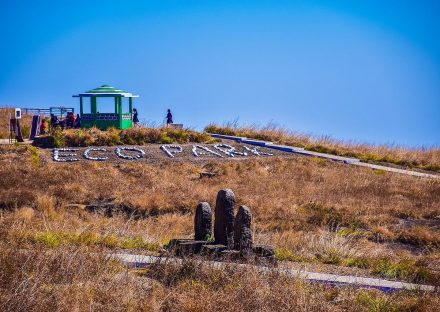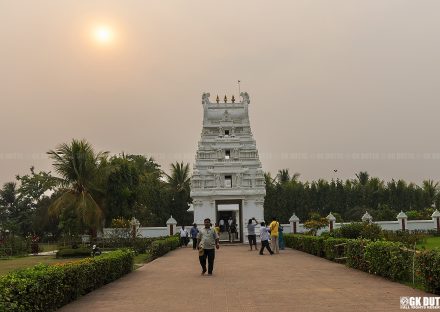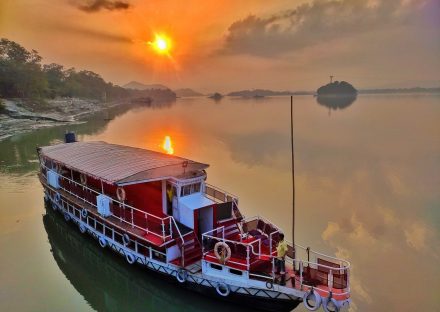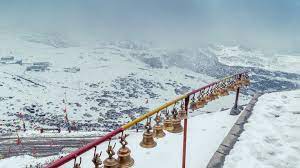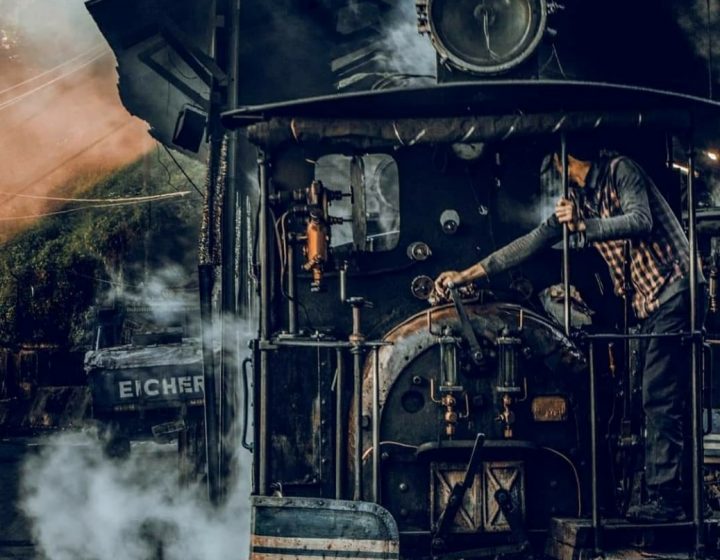Tour overview
3N SHILLONG 2N GUWAHATI
Shillong, Shillong is a hill station in northeast India and capital of the state of Meghalaya. It’s known for the manicured gardens at Lady Hydari Park. Nearby, Ward’s Lake is surrounded by walking trails. North, the Don Bosco Centre for Indigenous Cultures features displays on the region’s native people. Waterfalls include the Elephant Falls to the southwest. East of here, forested Shillong Peak offers city views.
Guwahati, Guwahati is a sprawling city beside the Brahmaputra River in the northeast Indian state of Assam. It’s known for holy sites like the hilltop Kamakhya Temple, featuring shrines to the Hindu deities Shiva and Vishnu. To the east, 18th-century Navagraha Temple is an astronomical center with planetary shrines. Umananda Temple, dedicated to Shiva and covered with engravings, stands on Peacock Island in the river.
Included
- All Toll Taxes, Parking fees and Driver's Expenses.
- Transportation mentioned in the itinerary.
- Hotel Booking, if required.
- Tour Manager.
Not Included
- Any Private Expenses.
- All other services not mentioned in the inclusions.
DAY 01: TRANSFER FROM GUWAHATI TO SHILLONG
Morning after on arrival at Guwahati Airport or Railway Station, assistance and warm traditional welcome by our representative and visit the famous Maa Kamakhya Temple on the Nilachal Hills (10kms) – a seat of the tantric cult in India and one of the 108 Shakti Pethas in the country. Later the drive towards Shillong, also known as ‘The Scotland of the East’ is the capital city of Meghalaya. En route you will visit the largest manmade lake of Northeast India – Umiam Lake . Reaching Shillong after a 5 hours journey (approximately), we check-in at a city Hotel. We visit Elephant Fall and Shillong Peak. Evening free for leisure or for shopping in the famous Police Bazaar in Shillong.
Places Include:
Umiam Lake: Is one of the biggest artificial lakes in Meghalaya that is situated about 15 km from Shillong. It is more easily recognised as Bara Pani, and covers.
Elephant falls and shillong peak: The Elephant Falls are a two-tier waterfall in Shillong, Meghalaya, India. The mountain stream descends through two successive falls set in dells of fern-covered rocks.
Overnight in Shillong.
DAY 02: SHILLONG – KRANG SURI FALLS (JOWAI) – SHILLONG
Today after breakfast we will explore the Krang Suri falls, Krang Suri is blessed with shimmering blue waters and sparkling sunlight. This heady mixture of nature is sometimes known to create a rainbow. It's truly a magical pool in nature's wonderland. Full day at Krang suri. Later Back to Shillong. Evening explore the famous Police Bazaar in Shillong .
Places Include:-
Krang Suri: Krang Suri is one of the most beautiful waterfalls in the District. It is located in the Amlarem Civil Sub Division. krang suri falls is beautiful tourist attraction. water is so clear you can see stones Located in the Amlarem Civil Sub Division, KRANG-SURI has carved out a Krang Suri Falls is the most exotic waterfall in the Jaintia Hills District, Meghalaya.
Overnight at Shillong.
DAY 03: SHILLONG – DAWKI – MAWLYNNONG - SHILLONG
Wake up early and have your breakfast and drive to Mawlynnong. Today you can explore the cleanest village Mawlynnong in the world. You can take the sky walk. Spectacular view of the living Root Bridge. After lunch, drive to Dawki. Dawki is the gateway to Bangladesh where major export and import transactions take place. It is a splendid drive of 45 kilometres passing through deep gorges and ravines, which is certainly a thrilling experience. On approaching Dawki is the Umngot river, the Umngot river is the natural boundary between Ri Pnar or Jaintia Hills with Hima Khyrim of Khasi hills over which a single span suspension bridge was constructed. Later back to Shillong.
Places Include:
Sky Walk: The Skywalk on the terrace is the icing on the cake, it gives you a panoramic view of the skyline of entire Shillong. Kudos to the entire team at Don Bosco museum .
Umngot River: Umngot River, possibly India’s cleanest river, flows through Dawki, a small but busy town in the East Jaintia Hills district near the Indo-Bangladesh border, In Meghalaya, India. Dawki serves as a busy trade route between India and Bangladesh where hundreds of trucks pass every day.
Jaintia Hills: The united district Jaintia Hills District was created on 22 February 1972 and occupied an area of 3819 km. It had a population of 270,352 The district is part of the Meghalaya subtropical forests ecoregion. With the bifurcation of the erstwhile Jaintia Hills District into East and West Jaintia Hills Districts, West Jaintia Hills District came into existence on 31 July 2012 with its headquarters at Jowai. Jowai is the host of all the heads of important governmental offices and establishments, educational institutions, hospitals, banking institutions, etc.
Khasi Hills: The Khasi Hills is a low mountain formation on the Shillong Plateau in Meghalaya state of India. The Khasi Hills are part of the Garo-Khasi-Jaintia range and connects with the Purvanchal Range and larger Patkai Range further east. Khasi Hills, and the whole Garo-Khasi-Jaintia range, are in the Meghalaya subtropical forests ecoregion.
Khasi Hills, and the entire Meghalaya state was administratively part of Assam before 1970. In older sources in particular, the alternative transcription Khasia Hills is seen.
Hima Khyrim :The Khasi people are an indigenous ethnic group of Meghalaya in north-eastern India with a Famous among these Syiem Ships are Hima Mylliem, Hima Khyrim, Hima Nongkhlaw, amongst others.
Overnight at Shillong.
DAY 04: SHILLONG - CHERRAPUNJEE – GUWAHATI
Morning after breakfast drive to Cherrapunjee which is famed for being the wettest place in the world. After a drive of 1 ½ hours amid pine trees and mists we reach Cherrapunjee. Cherrapunjee possesses some exotic waterfalls and impressive limestone caves. In Cherrapunji, we visit the Nohkalikai Falls, Seven sister falls ,Mawsmai Caves, RamaKrishna Mission, Eco Park, Dainthlen Fall, wei sawdong, Arwah cave, Garden cave. Later back to Guwahati .
Places Include:
Nohkalikai Falls: Is the tallest plunge waterfall in India. Its height is 340 metres (1,115 ft). The waterfall is located in the Indian state of Meghalaya, near Cherrapunji, one of the wettest places on Earth. Nohkalikai Falls are fed by the rainwater collected on the summit of a comparatively small plateau and decrease in power during the dry season, from December to February. Below the falls is a plunge pool with unusual green-colored water.
Nohsngithiang Falls: Also known as the Seven Sisters Waterfalls or Mawsmai Falls is a seven-segmented waterfall located 1 kilometre (0.62 mi) south of Mawsmai village in East Khasi Hills district in the Indian state of Meghalaya. The water falls from a height of 315 metres (1,033 ft) and has an average width of 70 metres (230 ft). making it one of the tallest waterfalls in India.
Mawsmai Cave: Mawsmai Cave is at a stone's throw away from Sohra (Cherrapunjee) and 57 km from Shillong in the little village of Mawsmai.
Ramakrishna Mission: The building of Ramakrishna Mission, Shillong at the present site was completed and in the same year this center got affiliation to the headquarters of Ramakrishna Mission, Belur Math. It was a dream which was conceived by revered Swami Prabhanandaji Maharaj (Ketaki Maharaj) which was put forth at the managing committee in 1929 at the Jagannath Temple Premises in which Swami Shankaranandaji Maharaj happened to be present. Swami Bhuteshanandaji Maharaj became the first secretary of the Mission.
Eco Park: Eco Park is one of the popular tourist attractions of Cherrapunjee from where the visitors can enjoy lovely view of the ‘Green Canyons’ of Cherapunji along with the waterfalls that are located nearby. The eco park also has a crystal clear water stream in its boundaries.
Dainthen Hills: The waterfall derives its name from a Thlen or a snake of gigantic size which dwelt in a cave. Legend has it that the people destroyed the snake in order to rid themselves of its reign of terror. Adjacent to the very spot where the Thlen was slaughtered lies the Dainthlen Waterfalls. Natural rock carvings of the epi'sode draw visitors to see the image of the Thlen, the symbol of greed, corruption and evil.
Wei Sawdong: Wei Sawdong or the three level waterfalls is a must must visit while you are in Sohra. This is way more beautiful than you will see in the pictures.
Arwah Caves: Sunken chamber leading to caverns known for limestone walls with fossils of fish & crustaceans.
Garden Cave: One of the most beautiful places I visited in Meghalaya, although it was a rainy day, but we enjoyed the waterfalls and beautiful scenery of various places.
Overnight at Guwahati.
DAY 05: GUWAHATI LOCAL SIGHTSEEING
Early Morning visit the famous Maa Kamakhya Temple on the Nilachal Hills (10kms) – a seat of the tantric cult in India and one of the 108 Shakti Pethas in the country.Return back to hotel after breakfast visit Sri Shankardeva Kalakshetra-a cultural centre with a fine exposition of the life and culture of the people of Assam,Balaji Temple & Basistha Ashram.Evening River Cruise on the mighty river Brahmaputra .
Places Include:
Kamakhya Temple : Kamakhya Temple is a Sakta temple dedicated to the mother goddess Kamakhya. It is one of the oldest of the 51 Shakti Pithas. Situated on the Nilachal Hill in western part of Guwahati city in Assam, India, it is the main temple in a complex of individual temples which is the most comprehensive representation of the ten Mahavidyas of Shaktism,namely, Kali, Tara, TripuraSundari, Bhuvaneshwari, Bhairavi, Chhinnamasta, Dhumavati, Bagalamukhi, Matangi and Kamalatmika. Among these, Tripurasundari, Matangi and Kamala reside inside the main temple whereas the other seven reside in individual temples. It is an important pilgrimage destination for Hindus and especially for Tantric worshipers.
Nilachal :Is a style of Hindu temple architecture in Assam, India, that is characterized by a bulbous polygonal dome over a cruciform ratha type bada. This hybrid style developed first in the Kamakhya temple on the Nilachal hills under the Koch kingdom and became popular as a style later under the Ahom kingdom
Sankaradev Kalakshetra : Srimanta Sankaradeva Kalakshetra commonly Kalakshetra is a cultural institution in the Panjabari area of Guwahati, Assam, India, named after the medieval poet-playwright and reformer Srimanta Sankardev.
Tirupati Balaji Temple : The Tirupati Balaji Temple is a magnificent temple of the city, Guwahati. This shrine is dedicated to Lord Venkateswara and is considered to be a very holy place for the Hindu pilgrims. The temple has a very unique architectural design and is built over a large area of land. At the entrance of the temple one can find a temple of Lord Ganesha. The main temple dedicated to Lord Balaji has an idol weighing about 4 tonnes. In the adjoining portions to the main temple there are several other temples that are built in dedication of other deities like Goddess Padmavathi and Garuda who is the vahana of Lord Balaji. One can also see the South Indian style used in the construction of this temple. The pure white structure of the complex allures the visitors the most. The temple organizes regular pujas and other religious ceremonies. There is a beautiful park attached to the temple where you can sit and relax for sometime after completing the puja in the mandir. The serenity and pleasant ambience of the place makes one forget all the worries and tensions of life.
Basistha temple: Located in the south-east corner of Guwahati city, Assam, India, is a Shiva mandir. The history of the Basistha Ashram where the temple is located dates back to the Vedic age. According to legend the ashram was founded by the great saint Basistha (Vasishtha).
Temple in the ashram stands on the bank of the mountain streams originating from the hills of Meghalaya, which becomes the rivers Basistha and Bahini/Bharalu flowing through the city.
Brahmaputra River: The Brahmaputra called Yarlung Tsangpo in Tibet, Siang/Dihang River in Arunachal Pradesh and Luit, Dilao] in Assam, is a trans-boundary river which flows through Tibet, India and Bangladesh. It is the 9th largest river in the world by discharge, and the 15th longest.With its origin in the Manasarovar Lake region, near the Mount Kailash, located on the northern side of the Himalayas in Burang County of Tibet as the Yarlung Tsangpo River, it flows along southern Tibet to break through the Himalayas in great gorges (including the Yarlung Tsangpo Grand Canyon) and into Arunachal Pradesh (India). It flows southwest through the Assam Valley as Brahmaputra and south through Bangladesh as the Jamuna (not to be mistaken with Yamuna of India). In the vast Ganges Delta, it merges with the Padma, the popular name of the river Ganges in Bangladesh, and finally, after merging with Padma, it becomes the Meghna and from here, it flows as Meghna river before emptying into the Bay of Bengal.
Overnight in Guwahati.
DAY 06: GUWAHATI AIRPORT DROP
After breakfast Check out from the hotel and visit the local Market at Guwahati later transfer to Guwahati Airport drop for the onward journey.

